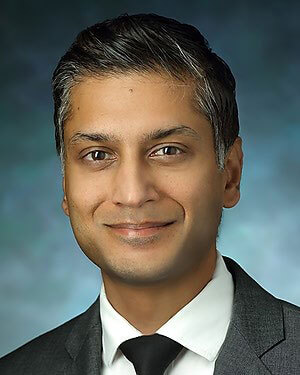If you've lost a significant amount of weight, you may have extra skin that prohibits you from moving and exercising with ease and feeling good in your body. Body contouring procedures can remove excess skin from your arms, buttocks, stomach or legs to help enhance your shape.
Why Choose Johns Hopkins for Body Contouring?
Surgical Expertise
Flexibility of Services
Personalized Care
Request an Appointment Request an Appointment
Schedule Online Through MyChart
Available for new and follow-up appointments with most providers.
Log into MyChart | Sign up for MyChart
Schedule by Phone
New and existing patients can schedule by phone using this number: 443-997-9466

Arm Lift
-
An arm lift, also called a brachioplasty, firms and reshapes the upper arm from the elbow to the shoulder. An arm lift removes sagging skin and fat that make many people self-conscious.
The plastic surgeons at Johns Hopkins in Baltimore, Maryland, do two different kinds of arm lifts:
- In a minimal incision arm lift, the plastic surgeon will make a small incision near the armpit if there isn’t much sagging skin to remove. In that case, your plastic surgeon will make the incision and do liposuction to remove excess fat.
- For people who have lost large amounts of weight or have more sagging skin for other reasons, the plastic surgeon will do a regular brachioplasty, making a longer incision that stretches from the elbow past the armpit. In this procedure, your surgeon will not only do liposuction but will also remove and tighten the excess skin.
-
For either kind of arm lift, you may receive local anesthesia and sedation so that you will be comfortable, or you may receive general anesthesia so that you will be asleep throughout. An arm lift generally takes from one to three hours. You will have a drainage tube for each arm, and this may be removed in one week. Pain is generally not significant.
It is an outpatient procedure so you can go home the same day. You will likely be able to see the results of the arm lift immediately. Swelling should begin to disappear in a matter of weeks and resolve completely in a few months.
While there may be some scarring, it is likely to be minimal and not visible to others.
-
-
Inner Thigh Lift
-
If you have lost a lot of weight or for those who have sagging skin on their thighs because of aging, the plastic surgeons at Johns Hopkins in Baltimore, Maryland, can do an inner thigh lift. A thigh lift offers a more toned and taut appearance. Liposuction can be done at the same time if excess fat needs to be removed from the area as well.
-
The procedure is an outpatient procedure, which takes up to two to three hours. You will be given general anesthesia or “twilight” sedation. Your plastics surgeon will make an incision at the junction of the inner thigh and the pubic area so that excess skin and fat can be removed and the remaining skin tightened. You will have two drainage tubes in place and these will be removed one to two weeks after surgery. These are needed to remove excess fluid that your body produces in response to surgery.
Recovery from thigh lift surgery
The plastic surgeon will prescribe pain medication for a few days after the procedure is done. Swelling should begin to disappear in a matter of weeks and resolve completely in a few months. You should consult with your surgeon about how long you will need to take off work; it is likely to be at least a week but will depend on the nature of your work. The plastic surgeon will advise you to refrain from strenuous activity, including running and other types of exercise, for four to six weeks. You may also need to wear a compression garment for up to six weeks.
You will have scars though the initial redness of the scars will begin to fade after two to three months, leaving much less visible white lines. Scars are generally well hidden by clothing. Therapies, such as laser, may minimize the visibility of scars.
-
Liposuction
-
Sometimes dieting and exercise alone does not remove fatty deposits in parts of the body, such as the thighs, hips, abdomen, and upper arms, which can be frustrating to some people. The plastic surgeons at Johns Hopkins, in Baltimore, Maryland, offer liposuction, or lipoplasty, a process that removes excess fat deposits.
Liposuction is also often done in conjunction with other procedures, such as facelifts, neck lifts, inner thigh lifts, and breast reduction for men and women.
-
Generally, whichever kind of liposuction is done, it can be done as an outpatient procedure if it is not being done in conjunction with a more invasive procedure. You will likely receive a local anesthetic and sedation to keep you comfortable.
-
 Kristen Parker Broderick, M.D.
Kristen Parker Broderick, M.D.
Assistant Professor of Plastic and Reconstructive Surgery Damon Sean Cooney, M.D., Ph.D.
Damon Sean Cooney, M.D., Ph.D.
Clinical Director, Face Transplant Program, Johns Hopkins Comprehensive Transplant Center
Assistant Professor of Plastic and Reconstructive Surgery Michele Ann Manahan, M.D.
Michele Ann Manahan, M.D.
Department Vice Chair for Faculty and Staff Development and Well-Being and Past Department Director of Patient Safety
Professor of Plastic and Reconstructive Surgery Sashank Kurapati Reddy, M.D., Ph.D.
Sashank Kurapati Reddy, M.D., Ph.D.
Assistant Professor of Plastic and Reconstructive Surgery Gedge David Rosson, M.D.
Gedge David Rosson, M.D.
Director of Breast Reconstruction
Associate Professor of Plastic and Reconstructive Surgery -
Lower Body Lift
-
A lower body lift, sometimes called a belt lipectomy, combines a tummy tuck (abdominoplasty) with a thigh lift. People who have lost a lot of weight, often through bariatric surgery, sometimes want to have a lower body lift to remove excess sagging skin. Other people who want a tummy tuck may also opt to tighten the skin in their thighs at the same time.
The cosmetic surgeons at Johns Hopkins, in Baltimore, Maryland, will do a lower body lift to tighten loose sagging skin in the abdomen, posterior thighs, hips, outer thighs and anterior thighs.
-
The plastic surgeon makes incisions from the back around to the front of thighs to allow excess skin and fat tissue to be removed. The remaining tissue is used to stretch and smooth the lower body. The procedure can be an outpatient procedure.
Recovery from a lower body lift
You will have some discomfort, however, this is expected and typically easily controlled with pain medications. Discomfort will dissipate over a week or two after the surgery. Your doctor will prescribe pain medication for you to take after you return home. You will also need to wear a compression garment for a few weeks after the surgery, and your plastic surgeon may recommend that you follow a special diet.
You will need to take at least two weeks off of work and will have to restrict normal activity for 4-6 weeks. You will have to wait approximately 6-8 weeks before you can resume exercise. Swelling should begin to disappear in a matter of weeks and resolve completely in a few months. While the scars will be permanent, they will fade in about 12 months and can be hidden by clothing.
-
Tummy Tuck (Abdominoplasty)
-
A tummy tuck, also called abdominoplasty, flattens your abdomen by removing excess fat and skin from the abdominal area and tightening the muscles. People often choose to have a tummy tuck if they have been unable to lose weight in that area of their bodies or after pregnancy or weight loss when the skin and muscles may sag. The plastic surgeons at Johns Hopkins, in Baltimore, Maryland, will consult with you to individualize your procedure to achieve the best possible results.
Tummy tuck procedures
After consultation with your cosmetic surgeon, you can decide between two procedures: a complete tummy tuck and a partial or mini tummy tuck.
-
Complete abdominoplasty - In this surgery, the plastic surgeon places the scar very low in the “bikini line” in order to disguise it as much as possible. Excess skin and fat are removed, and sometimes the muscles are repaired to create a flat contoured abdomen.
- Partial or mini abdominoplasty - This procedure focuses on one part of the abdomen and requires a smaller scar. The surgeon may opt for endoscopic-assisted surgery, which is less invasive and reduces the procedure time. However, this is reserved for special cases of abdominal muscle weakness and laxity.
-
-
Depending on which abdominoplasty procedure you will have, surgery may take anywhere from 1-3 hours. You will receive general anesthesia or intravenous “twilight” sedation. This surgery may require an overnight stay, as well as standing and sleep modifications for up to a week. You will have drainage tubes in place in order to remove any excess fluid that your body produces. This is normal and the tubes will be removed over 1-3 weeks.
-
-

